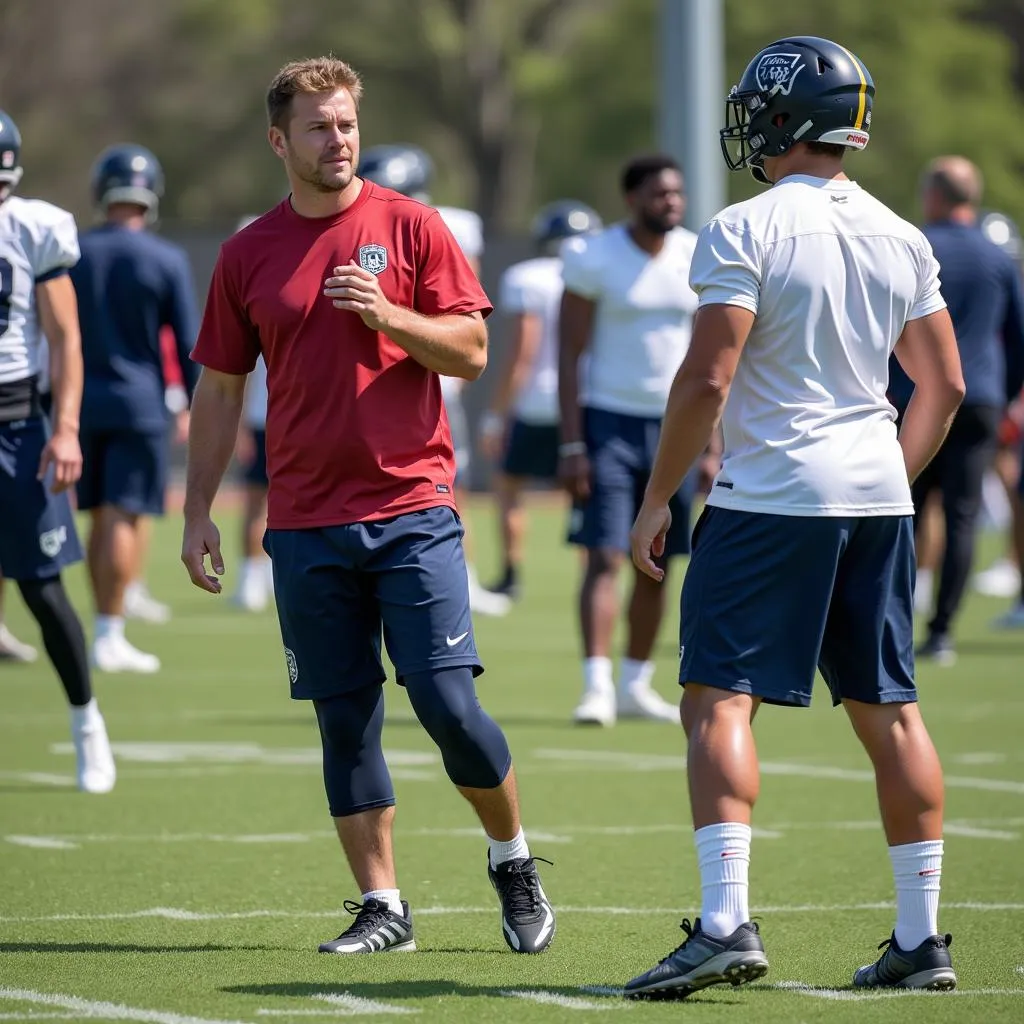In the world of football, understanding the nuances of the game is essential for both players and fans alike. One such nuance that often sparks debate is the difference between mechanical and automatic movements. While these terms may seem interchangeable, they represent distinct concepts that influence how players execute their skills and tactics.
What is a Mechanical Movement?
A mechanical movement in football is a deliberate, conscious action that involves a specific sequence of steps and techniques. Players execute mechanical movements by analyzing the situation, planning their actions, and then physically executing the chosen technique.
Think of a free kick: The player carefully positions the ball, studies the wall, analyzes the keeper’s position, and then decides on a technique to execute the shot. This involves a specific approach, a measured run-up, and a deliberate strike of the ball.
Examples of Mechanical Movements in Football:
- Passing: Players consciously select the type of pass, the target, the trajectory, and the power needed to execute it.
- Shooting: Players aim, adjust their body positioning, and strike the ball with a specific technique to control direction and power.
- Tackling: Players choose the appropriate tackle technique based on the opponent’s position, the ball’s location, and the potential risks.
 Mechanical movement in football
Mechanical movement in football
What is an Automatic Movement?
An automatic movement, on the other hand, is a subconscious action that is executed without conscious thought. This type of movement is developed through extensive training and repetition, allowing players to react instinctively to game situations.
Imagine a player making a quick turn to avoid an opponent: This action doesn’t involve conscious deliberation; the player’s body reacts instinctively based on the learned movements and skills.
Examples of Automatic Movements in Football:
- Dribbling: Skilled players dribble the ball instinctively, changing direction, and using their feet to control the ball without conscious thought.
- Heading: Experienced players head the ball automatically, using their neck, head, and shoulders to control the ball’s trajectory and direction.
- First touch: Players react instinctively to a pass, controlling the ball with a controlled touch, allowing them to transition seamlessly into the next move.
 Automatic movement in football
Automatic movement in football
The Importance of Both Mechanical and Automatic Movements
While it may seem like automatic movements are superior due to their speed and efficiency, both mechanical and automatic movements are crucial for a player’s success.
According to football coach, David Miller, “The best players combine mechanical and automatic movements effectively. They understand the game’s strategy and can execute complex tactics with conscious thought, while also reacting instinctively to changes in the flow of play.”
Mechanical movements provide the foundation: They allow players to learn the fundamentals of the game, develop technical skills, and understand the tactical elements.
Automatic movements provide the edge: They enhance a player’s speed, agility, and ability to react quickly to rapidly changing situations.
How to Improve Both Mechanical and Automatic Movements
Players can improve their mechanical movements through:
- Technical drills: Practicing specific skills like passing, shooting, and tackling under controlled conditions.
- Tactical analysis: Studying game footage, analyzing opponent movements, and understanding the tactical principles of the game.
- Cognitive training: Working on mental focus, decision-making, and situational awareness.
Players can improve their automatic movements through:
- Repetitious training: Consistently practicing skills until they become instinctive and subconscious.
- Game simulations: Participating in scrimmages and practice matches where they can experience real-game situations and develop their instincts.
- Developing muscle memory: Training the body to move automatically through repetitive actions and drills.
Conclusion
The difference between mechanical and automatic movements is a fundamental concept in football. By understanding the importance of both and honing both types of movement, players can elevate their game and achieve their full potential on the pitch.
Remember, both mechanical and automatic movements are essential tools in the arsenal of a successful football player. By mastering both, players can unlock their full potential and become formidable forces on the field.
FAQ
Q: Can I learn to play football without understanding these concepts?
A: While you can learn to play football without deeply understanding the concepts of mechanical and automatic movements, understanding them can significantly enhance your game.
Q: What are some drills that can help me improve my mechanical movements?
A: There are many technical drills that can help you improve your mechanical movements. You can find various drills online or consult with a coach.
Q: Are there any specific exercises that can help develop muscle memory for automatic movements?
A: Yes, there are! Repetitious drills involving specific skills like dribbling, heading, and first touch will help you develop muscle memory.
Q: What is the best way to improve my situational awareness in football?
A: There are many strategies for improving situational awareness. Watching game footage, practicing drills that involve reacting to different scenarios, and paying attention to the flow of the game during practice and matches are all helpful.
 Football coach training
Football coach training
Do you have any further questions about mechanical vs. automatic movements in football?
Contact us for more information or coaching resources. We can provide you with additional tips and support.